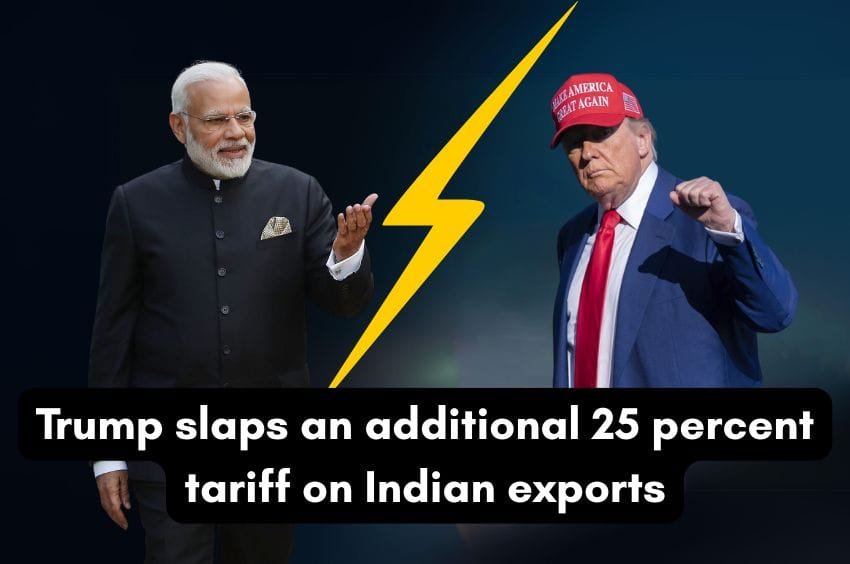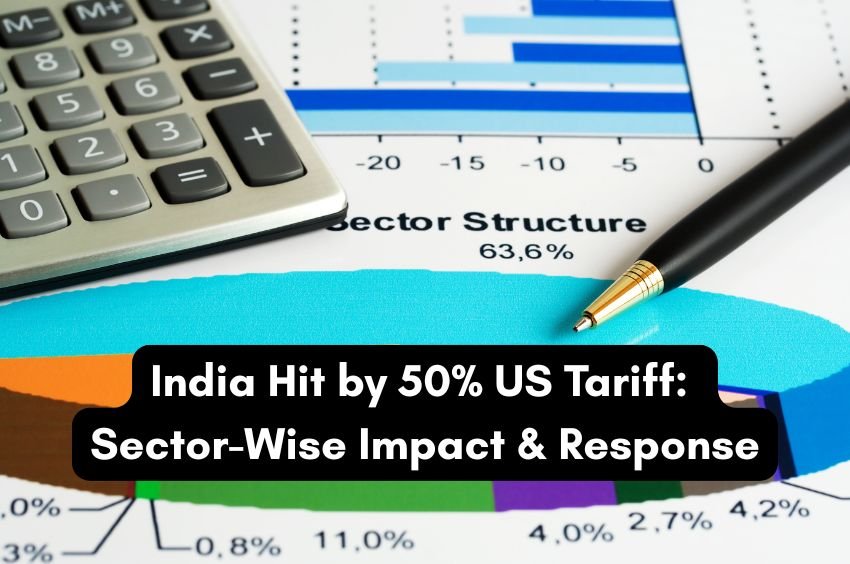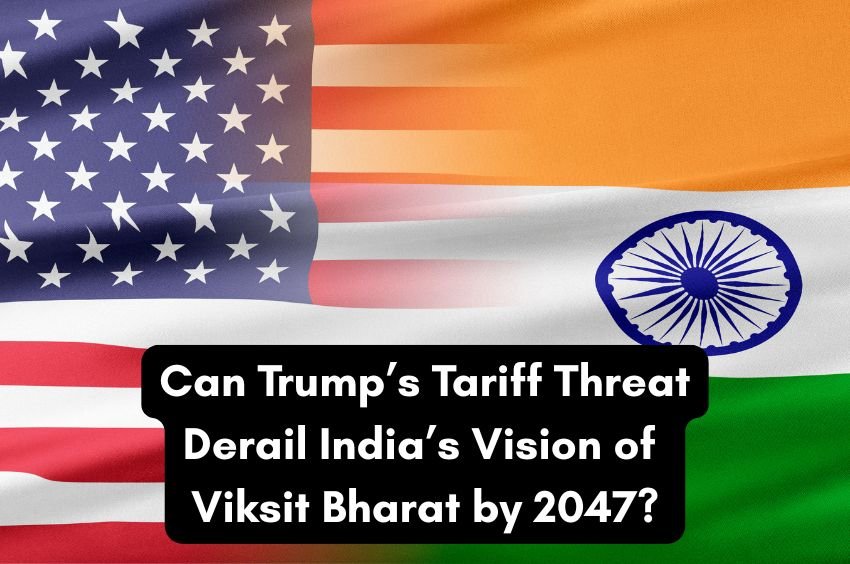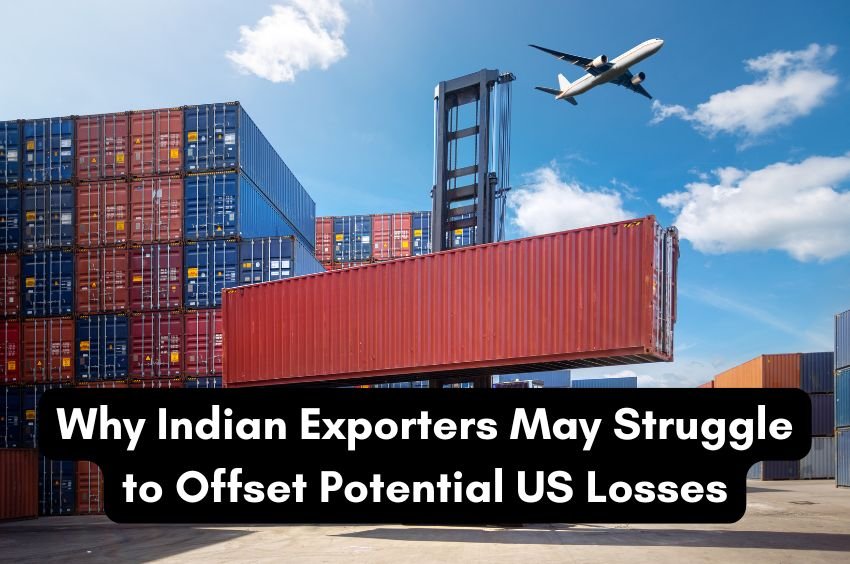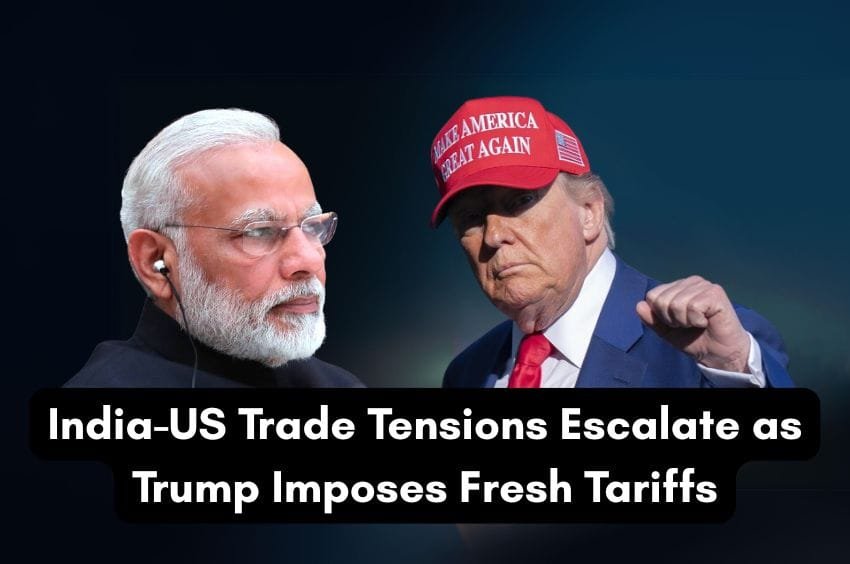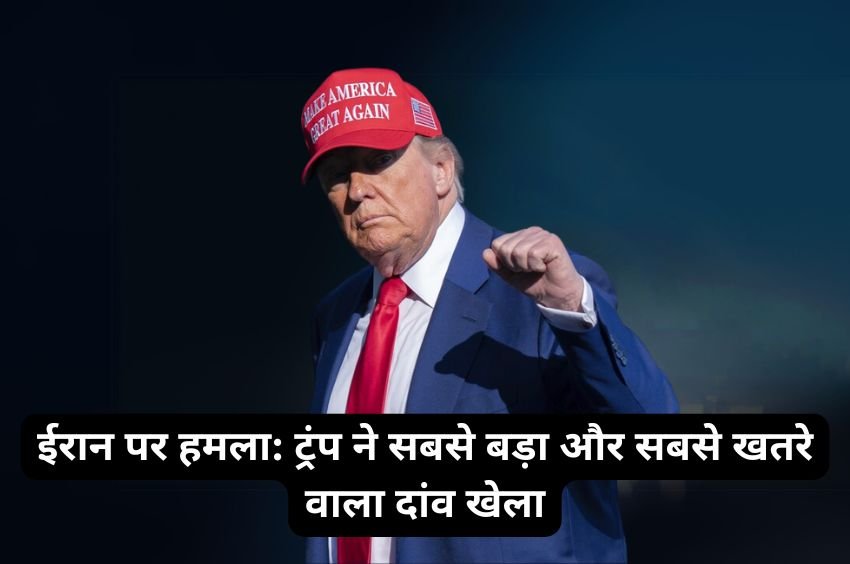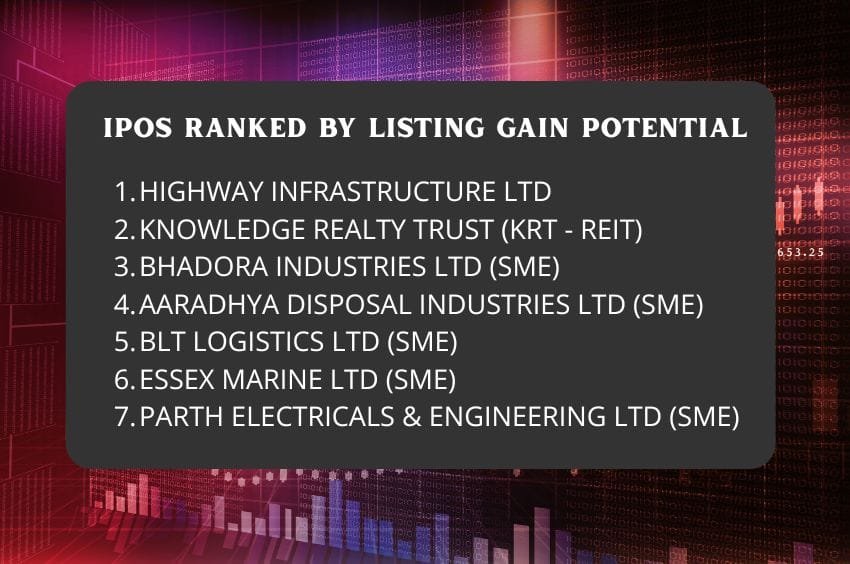Trade between the US and India is once again strained because former US President Donald Trump announced a 25% tariff on Indian products. People think this decision is a reaction to India’s continuous oil trade with Russia, and it might have a big effect on the economies of both countries.
Why the New Tariff?
Trump has imposed an additional 25% duty on Indian goods, claiming it’s a penalty for India’s oil imports from Russia. This is over and above existing tariffs. With this, the total tariff on many Indian products exported to the US could now hit 50% – making them among the most expensive imports for American buyers.
Expert Take: The move appears more political than economic, as India’s energy trade decisions are driven by national interest, not alignment.
How Much Trade is at Risk?
While some essential sectors are exempt, a large portion of Indian exports may be impacted.
Exempted Sectors:
- Pharmaceuticals
- Automobiles
- Semiconductors
Vulnerable Sectors (subject to full tariff):
- Textiles
- Steel & Aluminum
- Leather Goods
- Handicrafts
Potential Impact in Numbers:
| Category | Value (in $ Billion) | Tariff Status |
|---|---|---|
| Total Exports to US | 91 | – |
| Likely Impacted Exports | 60% (~$63.5 billion) | Higher Tariff |
| Likely Exempted Exports | 40% (~$30 billion) | Exempted/Lower |
Bigger Than Just Trade: A Geopolitical Signal?
This increase in tariffs isn’t only about trade deficits or economic policy. A lot of experts think it shows that Trump is unhappy with India’s expanding relations to Russia and China.
- India will go to the next SCO (Shanghai Cooperation Organization) conference.
- During the ceremony, PM Modi might talk to Chinese President Xi Jinping.
- The US may see India’s growing diplomatic balance between East and West as a sign that American might is fading.
India’s Calm But Firm Response
India’s Ministry of External Affairs (MEA) issued a mature, clear statement:
“Our energy imports are driven by market needs and national energy security for 1.4 billion people.”
This shows that India is not looking for confrontation but won’t compromise its economic sovereignty either.
What Should India Do Next?
India must take a strategic and balanced approach to tackle the situation. Here’s a plan of action:
Short-Term Moves:
- Protect vulnerable export sectors through incentives/subsidies
- Boost MSME support with easier credit and logistics cost waivers
- Launch export promotion drive (rumored to be in the works for September)
Medium-Term Strategy:
- Speed up FTA talks with:
- UK
- EU
- ASEAN nations
- Explore new markets in Africa, Latin America, and East Asia
Long-Term Focus:
- Restart active trade talks with the US
- Explain energy policies transparently
- Promote mutual trade benefits to avoid protectionist backlash
The Russia Factor: US Was Okay Before, Why Now?
Interestingly, during the Ukraine war, US officials indirectly supported India’s oil imports from Russia, understanding its energy needs. Now, the same is being used against India as a bargaining chip.
If the penalties continue, it may push India to strengthen trade with Iran or China-backed networks, which goes against US strategic interests.
Final Thoughts
This isn’t just a tariff hike – it’s a test of India’s diplomatic skill and economic resilience. While New Delhi must protect national interest, it must also keep the dialogue with Washington open. A healthy India-US trade relationship is not only good for both nations, but also vital for global stability.
